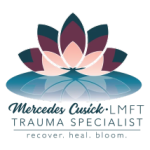EMDR Therapy in Los Angeles
Types of EMDR Therapy Offered:
- Traditional
- Intensively
- Intensives
- Adjunct Therapy
I understand that each individual’s journey through trauma is unique. To accommodate varying needs, I offer EMDR therapy in flexible formats. While weekly sessions are traditional, trauma processing can often be accelerated with more frequent or extended sessions, tailored to your specific goals and circumstances.
Weekly EMDR Sessions
Traditional:
50-minute appointments.
Intensively:
Longer sessions of 75 or 100 minutes for deeper, focused work.
EMDR Intensives – Half-Day & Multi-Day
For those seeking significant progress in a condensed timeframe,
I offer half-day and multi-day intensives designed
to fast-track healing.








